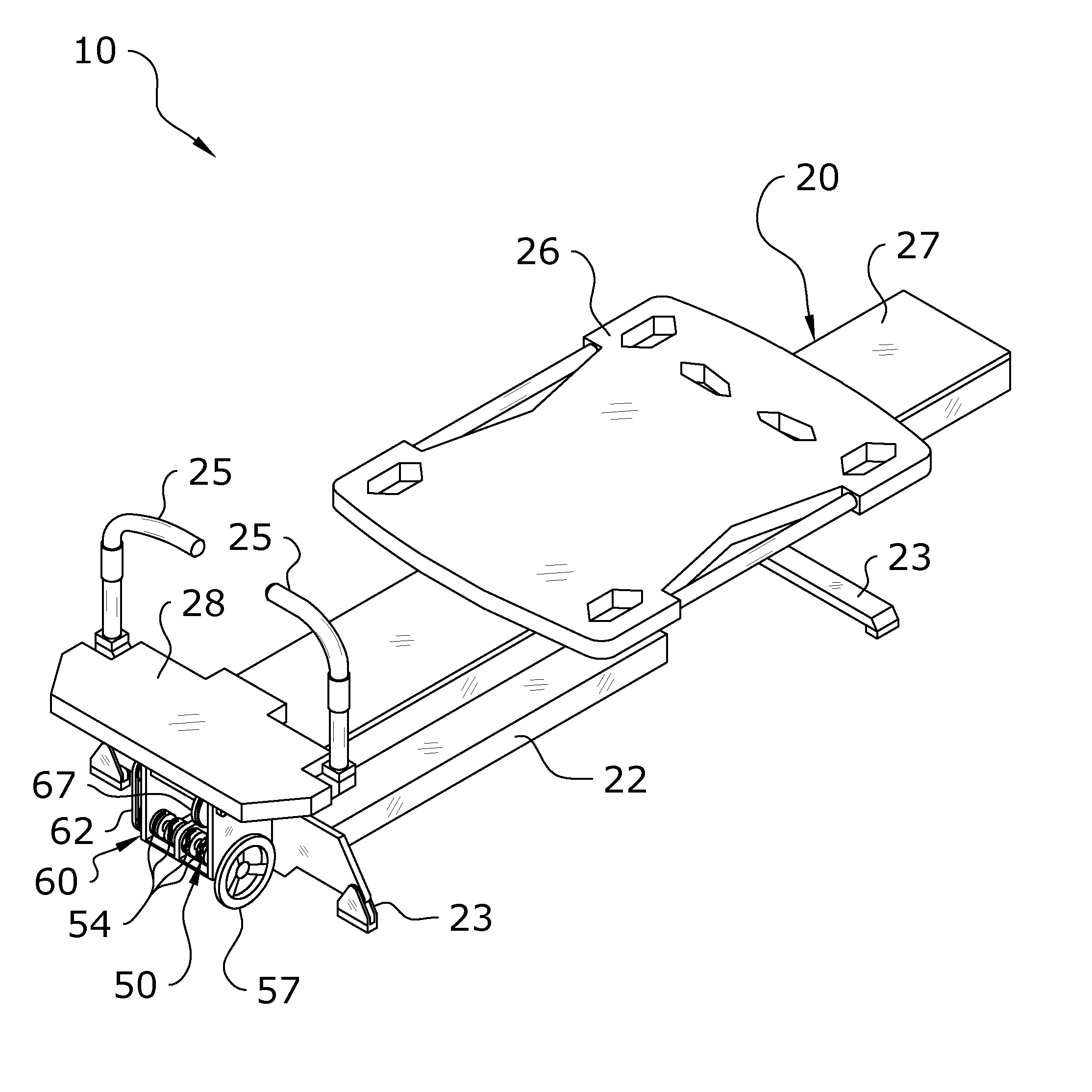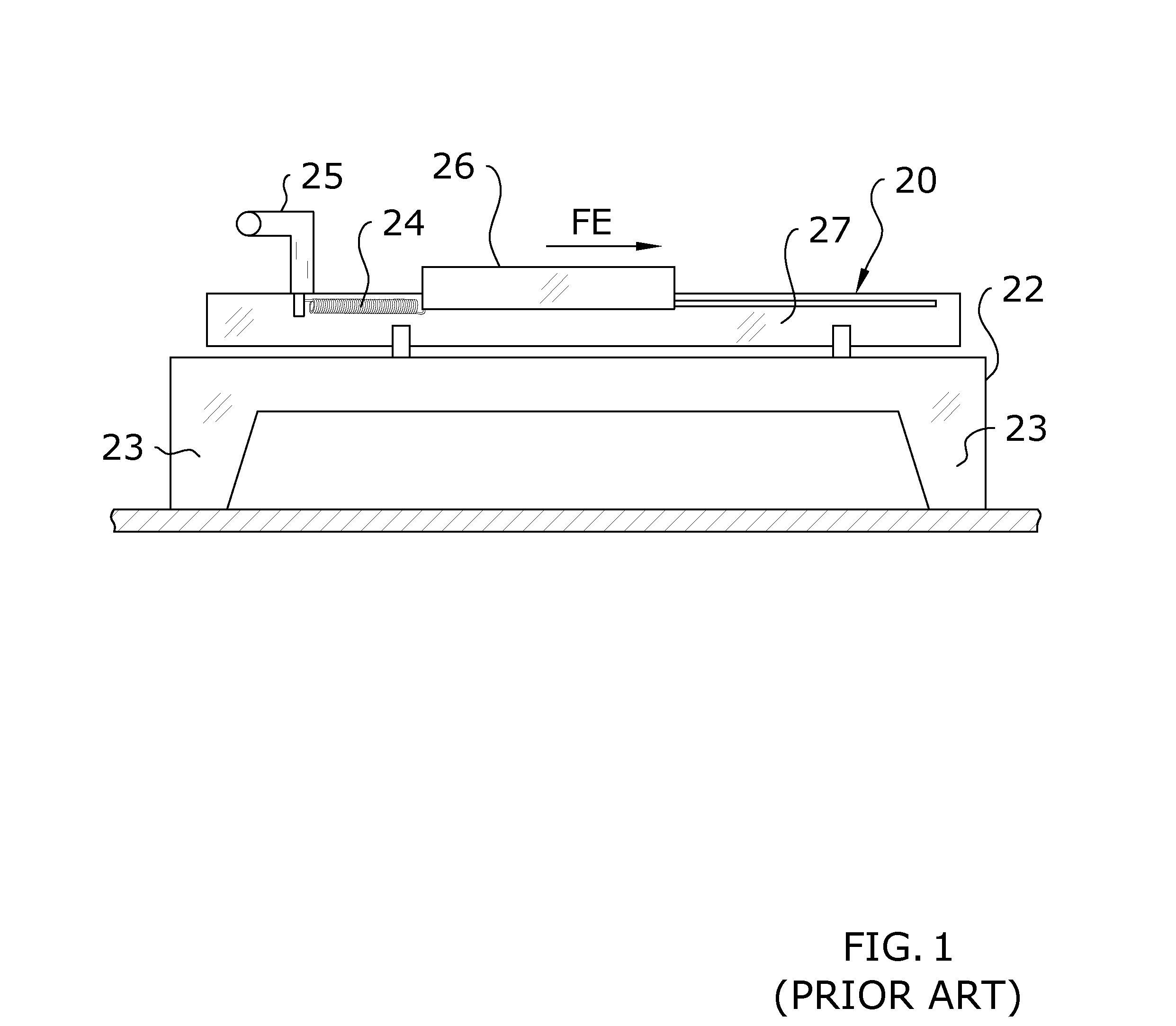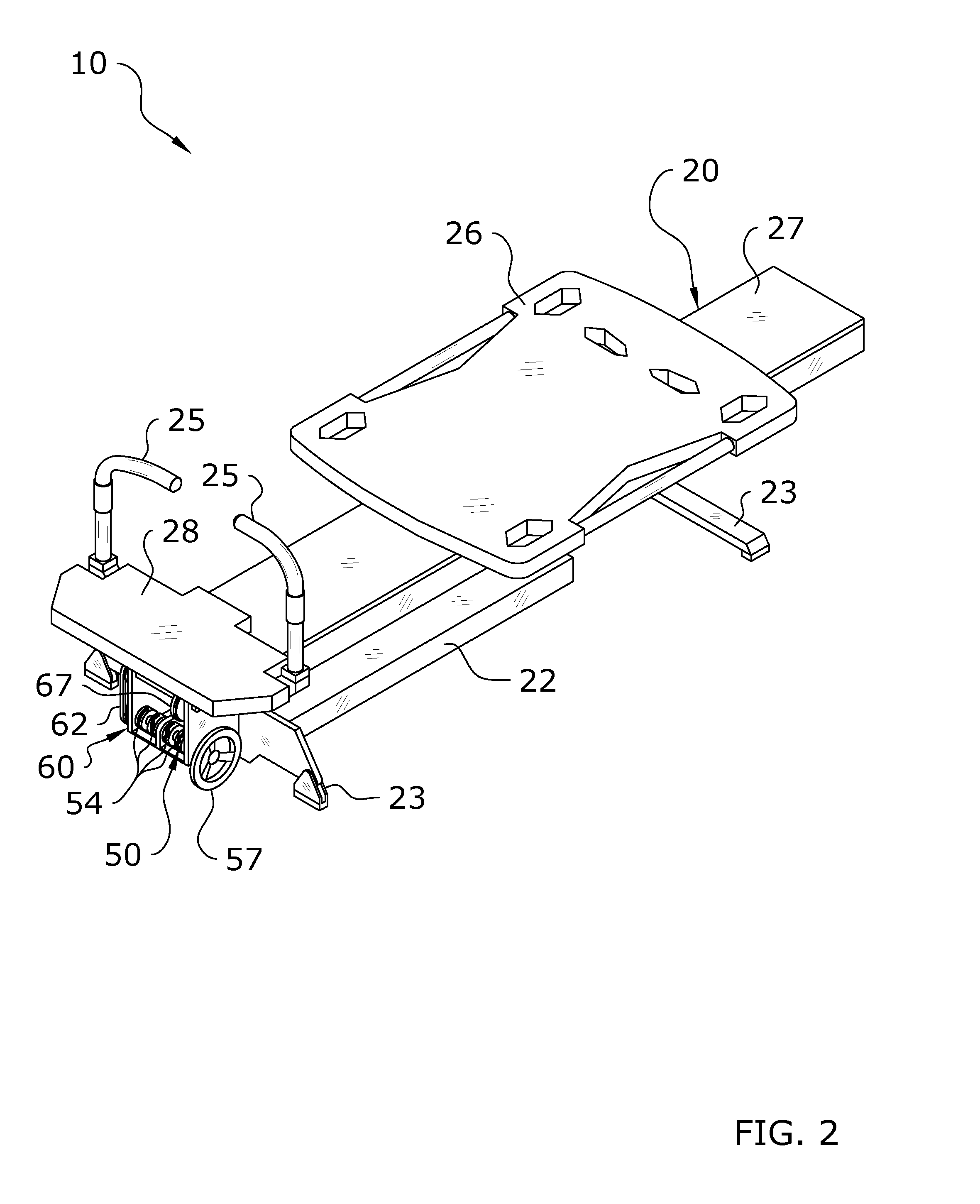Therefore, a bicep
machine does not appreciably exercise triceps, and a triceps
machine does not appreciably exercise the
biceps.
A
disadvantage of attempting to perform circuit or interval training on a variety of exercise apparatuses by immediately and without an appreciable
rest period, moving from one apparatus for one exercise, to another apparatus for a subsequent exercise is that in a typical gym environment, there will be another exerciser already working out on the next apparatus in the sequence, forcing the circuit exerciser to wait until the apparatus is available.
Another
disadvantage of performing
circuit training using multiple apparatuses in sequence within a gym environment is that even if the next apparatus is vacant, the proper weight or resistance level must be re-set for each exerciser.
In many instances, this is
time consuming, confusing, and the proper weight setting cannot be readily determined.
Again, the break in the circuit sequence reduces the intended advantages of the
circuit training session.
A
disadvantage of attempting to perform a variation of
circuit training upon a single exercise apparatus is that an exerciser must stop the exercise routine, most often by having to dismount the apparatus in order to change the existing resistance settings to new settings.
It often takes more time to change the resistance settings than the period of time the exerciser will actually perform the new exercise at the new setting.
Whether located laterally to the parallel rails, between the parallel rails, or a combination of in between and laterally to the rails, the bias members create obstacles to safely mounting or dismounting the apparatus, and are inherently injury-causing.
It is therefore well known to those skilled in the art that most injuries in Pilates occur during mounting or dismounting, so this process also increases the risk of injury.
Although one
advantage of using a Pilates apparatus for a circuit-type of training is that the exerciser will never have to break their workout session by waiting for another exerciser to vacate the apparatus, the major disadvantage is that the exerciser must still stop their workout between exercises to make spring changes.
This is disruptive for the class, the delays thereby causing the class time to run over the allotted time period in order to complete the full allotted exercising time.
Contemporary Pilates apparatuses therefore increase the likelihood of injury, and are exceedingly difficult for an exerciser to determine the proper resistance levels and quickly make corrections without class disruption, all of which are commercially detrimental to the operations of the gym or Pilates
studio.
Delays disrupt the classes; cause the exercisers to become frustrated, and ultimately limiting the number of classes that can be conducted during the day resulting in lost revenues for the gym or
studio.
As can readily be seen in the immediately preceding example, the necessity of stopping the interval routine to dismount the apparatus to change resistance settings breaks the
work cycle, thereby significantly diminishing the intended benefits of the interval training.
Still another disadvantage of all of the exercise machines and Pilates apparatuses just described is that the resistance is unidirectional.
In other words, none of the machines provide for an exerciser to immediately change the direction of the
resistance force.
Not only would this be an unnatural exercise, reversing a
treadmill belt during exercise would be dangerous, and would likely be the source of many injuries.
On the other hand, there is no provision to allow the exerciser to switch resistance direction so they can push upward on the bar and lift the weights to exercise the shoulders as would be provided by a shoulder press
machine.
 Login to View More
Login to View More  Login to View More
Login to View More 


